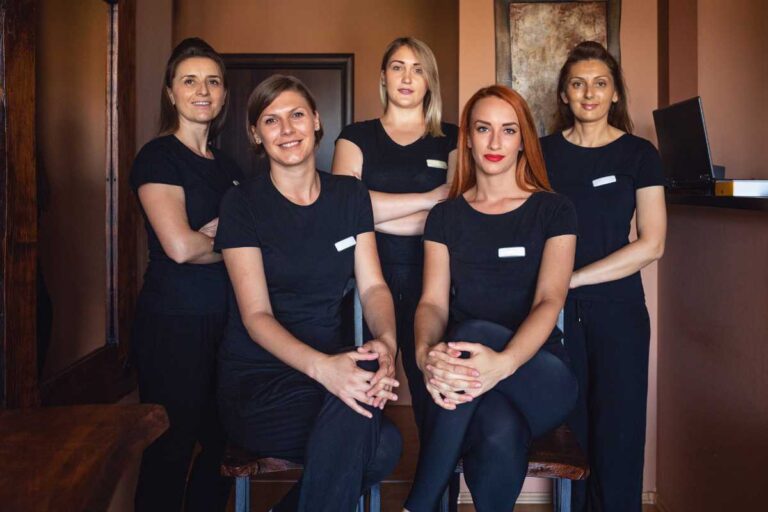SEO For Massage Therapy Spas
Implementing SEO Techniques for Massage Therapy Spas
Massage therapy spas can greatly benefit from implementing effective SEO techniques. In today’s digital age, having a strong online presence is crucial for attracting more clients and increasing bookings. SEO, or Search Engine Optimization, is the process of optimizing your website to rank higher in search engine results pages (SERPs), ultimately driving more organic traffic to your site. By incorporating SEO strategies tailored to your massage therapy spa, you can enhance your online visibility and stay ahead of the competition.
One of the main reasons why implementing SEO techniques is important for massage therapy spas is the increasing number of people relying on search engines when looking for local services. In fact, studies show that a significant percentage of consumers search for local businesses, including massage therapy spas, through search engines like Google. By optimizing your website for relevant keywords, you can appear higher in search results, increasing the chances of potential clients finding and choosing your spa over competitors.
An effective strategy for optimizing your massage therapy spa’s website begins with thorough keyword research. By identifying the keywords and phrases potential clients are likely to use when searching for massage services in your area, you can better tailor your website content to meet their needs. Tools like Google Keyword Planner can assist you in identifying high-search-volume keywords that are relevant to your spa. Incorporate these keywords naturally in your website content, including page titles, headings, meta descriptions, and body text, to improve your website’s search engine rankings.
On-page SEO is another crucial aspect of optimizing your massage therapy spa website. This includes optimizing your website’s URL structure, utilizing header tags (H2, H3, etc.), incorporating relevant and well-written meta descriptions, and optimizing image alt tags. Additionally, make sure your website is mobile-friendly, as an increasing number of users are accessing the internet through mobile devices. Mobile-friendly websites perform better in search engine rankings, ensuring that your spa reaches a wider audience.
While on-page SEO is important, off-page SEO strategies are equally crucial for boosting the online visibility of your massage therapy spa. This involves building high-quality backlinks from reputable websites related to the healthcare and wellness industry. Backlinks signal to search engines that your website is trustworthy and credible, leading to improved rankings. Additionally, encourage happy clients to leave positive reviews on platforms such as Google My Business, Yelp, or TripAdvisor. Positive reviews not only enhance your online reputation but can also attract more clients to your spa.
Don’t overlook the power of local SEO tactics to attract clients and increase bookings. To optimize your spa for local searches, ensure that your website contains accurate and up-to-date contact information, including your spa’s name, address, and phone number (NAP). Registering your spa with online directories and local listings such as Google My Business, Bing Places, and Yelp can also significantly boost your local visibility.
Implementing SEO techniques specifically tailored for massage therapy spas is vital for increasing online visibility, attracting more clients, and ultimately, driving bookings. By conducting thorough keyword research, optimizing your website’s on-page elements, implementing effective off-page strategies, and utilizing local SEO tactics, your massage therapy spa can establish a dominant online presence and gain a competitive advantage in the digital landscape. Start incorporating SEO techniques today, and watch your spa thrive in the online world.
Effective Keyword Research Strategies for Optimizing Massage Therapy Spa Websites
Keyword research is a crucial aspect of search engine optimization (SEO) for massage therapy spas. By identifying the right keywords, you can optimize your website’s content to attract more traffic and potential clients. In this article, we will discuss some effective keyword research strategies to help you boost the online visibility of your massage therapy spa.
One of the key steps in keyword research is to understand your target audience and their search intent. Put yourself in the shoes of your potential clients and think about what they would search for when looking for massage therapy services. Are they looking for specific massage techniques like Swedish massage or deep tissue massage? Or are they searching for certain benefits such as stress relief or pain management?
Once you have an idea of the search intent, you can start brainstorming relevant keywords. Use tools like Google Keyword Planner, SEMrush, or Moz Keyword Explorer to generate a list of potential keywords. These tools provide insights on search volume, competition, and related keywords, helping you make informed decisions.
Another effective strategy is to analyze your competitors’ keywords. Look at the websites of other massage therapy spas in your area and see what keywords they are targeting. This can give you an idea of which keywords are popular in your industry and help you identify any gaps or opportunities for your own website.
Long-tail keywords are another valuable asset in keyword research. These are longer and more specific search queries that often have lower competition. For example, instead of targeting the generic keyword "massage therapy," you could target a long-tail keyword like "deep tissue massage therapy in [your location]." These long-tail keywords are not only easier to rank for but also attract more qualified and targeted traffic.
Once you have identified a list of potential keywords, it’s important to prioritize them based on relevance and search volume. Focus on keywords that align with your services and have a significant search volume. You can also consider targeting local keywords to attract clients in your area. For example, "massage therapy spa in [your city]" or "best massage therapist near me."
Remember to regularly review and update your keyword strategy. Monitor your website’s performance using tools like Google Analytics to identify which keywords are driving the most traffic and conversions. This data can help you refine your keyword strategy and optimize your content for better results.
Effective keyword research is essential for optimizing your massage therapy spa website and attracting more clients. By understanding your target audience, analyzing competitors, and prioritizing relevant keywords, you can improve your online visibility and increase your chances of success in the competitive world of SEO. So, take the time to research and incorporate the right keywords into your content, and watch your website climb the search engine rankings.
The Importance of On-Page SEO for Massage Therapy Spas
As the digital landscape continues to evolve, it is essential for massage therapy spas to optimize their online presence in order to attract more clients and stay ahead of the competition. One of the key aspects of achieving this is through the implementation of effective on-page SEO techniques. On-page SEO refers to the optimization of various elements on a website to improve its visibility and ranking on search engine results pages (SERPs). By incorporating on-page SEO strategies, massage therapy spas can enhance their online visibility and attract a larger audience in search of their services.
First and foremost, keyword research plays a vital role in on-page SEO. Identifying the right keywords that potential clients are using to search for massage therapy spas is crucial. By conducting thorough keyword research, you can determine the most relevant and high-traffic keywords to include in your website content. These keywords should be strategically placed in the title tags, meta descriptions, headings, and throughout the body of your website pages. This will help search engines understand the purpose of your website and improve its ranking for relevant searches.
Another important aspect of on-page SEO is optimizing the website’s content. Content is king in the online world, and massage therapy spas can leverage this by creating informative and engaging content that resonates with their target audience. Each webpage should have unique and valuable content that incorporates the identified keywords naturally. It is essential to maintain a balance between keyword optimization and providing valuable information to visitors. This will not only satisfy search engine algorithms but also enhance the user experience, leading to higher engagement and conversions.
In addition to written content, optimizing images and videos is also crucial for on-page SEO. Search engines not only analyze the textual content but also evaluate the multimedia elements on a webpage to understand its relevance. It is important to provide descriptive alt tags for images and optimize videos with relevant keywords in titles, descriptions, and tags. This will help search engines index your media and improve the overall visibility of your website in search results, attracting potential clients.
Furthermore, the structure and usability of your website play a significant role in on-page SEO. Search engines favor websites that are user-friendly and easy to navigate. It is important to have a clear and logical site structure with well-organized categories and intuitive navigation. This will help search engine crawlers efficiently index your website, improving its visibility and ranking in search results. Additionally, optimizing your website for mobile devices is crucial as it is becoming the preferred method of browsing for many users. A responsive design will ensure that your website is accessible and user-friendly across different devices, leading to a better user experience.
Implementing effective on-page SEO techniques is crucial for massage therapy spas to improve their online visibility, attract more clients, and stay competitive in the digital landscape. By conducting keyword research, optimizing content, images, and videos, and ensuring a user-friendly website structure, massage therapy spas can enhance their on-page SEO and drive organic traffic to their websites. Remember, a well-optimized website not only attracts search engines but also provides a seamless user experience, resulting in higher client engagement and increased bookings.
Effective Off-Page SEO Strategies for Boosting the Online Visibility of Massage Therapy Spas
Introduction
To maximize the online visibility of your massage therapy spa and attract more clients, it’s important to implement effective off-page SEO strategies. Off-page SEO involves actions taken outside of your website to improve its search engine rankings. By utilizing these strategies, you can build a strong online presence, enhance your spa’s reputation, and drive organic traffic to your website. In this article, we will explore some effective off-page SEO techniques specifically tailored for massage therapy spas.
1. Online Directories and Listings
To boost your spa’s visibility online, consider listing your business on popular online directories and listings such as Google My Business, Yelp, and TripAdvisor. These platforms not only help potential clients find your spa but also contribute to improving your local search rankings. Make sure to provide accurate and up-to-date information about your spa, including your address, contact details, and services offered.
2. Local Citations and Reviews
Another effective off-page SEO strategy is to build local citations and encourage your clients to leave positive reviews. Local citations refer to mentions of your spa’s name, address, and phone number on other websites, such as business directories, local blogs, and social media platforms. These citations help search engines verify the legitimacy and popularity of your spa, thereby increasing your search engine rankings. Positive reviews from satisfied clients not only enhance your spa’s credibility but also attract new customers.
3. Guest Blogging and Influencer Collaboration
Partnering with influencers or guest blogging on relevant websites can significantly improve your spa’s online visibility. By providing valuable content and linking back to your website in your guest posts, you not only increase your brand exposure but also generate high-quality backlinks, which are crucial for search engine optimization. Collaborating with influential social media personalities or bloggers who share your target audience can also expose your spa to a wider audience and drive more traffic to your website.
4. Social Media Engagement
Engaging with your audience on social media platforms is a powerful off-page SEO strategy. Regularly posting relevant content, sharing updates about your spa, and interacting with your followers can help create a strong online presence. Encourage your clients to share their experiences on social media and tag your spa, which can increase brand awareness and attract potential customers. Additionally, social media signals can indirectly impact your search engine rankings, so it’s important to maintain an active and engaging presence on these platforms.
5. Link Building
Building high-quality backlinks from relevant and authoritative websites is a fundamental off-page SEO technique. You can accomplish this by creating shareable content that naturally attracts links from other websites. Additionally, actively reaching out to relevant websites, such as local business directories, industry blogs, and related businesses, and requesting backlinks can also be effective. However, it’s important to focus on quality rather than quantity when it comes to link building, as search engines prioritize the relevance and credibility of the linking domains.
Implementing effective off-page SEO strategies is essential for boosting the online visibility of your massage therapy spa. By leveraging online directories, local citations, guest blogging, social media engagement, and link building, you can enhance your spa’s reputation, drive organic traffic, and ultimately attract more clients. Remember to consistently monitor and analyze the results of your off-page SEO efforts to fine-tune your strategies and stay ahead of the competition in the ever-evolving digital landscape.
Attracting Clients and Increasing Bookings for Your Massage Therapy Spa through Local SEO Tactics
When it comes to running a successful massage therapy spa, attracting new clients and increasing bookings are crucial for growth. One effective way to achieve these goals is by incorporating local SEO tactics into your online marketing strategy. Local SEO focuses on optimizing your website and online presence to target potential customers in your local area. By implementing the right strategies, you can boost your online visibility, drive more traffic to your website, and ultimately attract more clients to your massage therapy spa.
To get started with local SEO for your massage therapy spa, it’s important to focus on the following tactics:
-
Keyword research: Begin by conducting thorough keyword research to identify the terms and phrases that potential clients in your local area are using to search for massage therapy services. Targeting localized keywords will help ensure that your website appears in relevant search results.
-
Optimize your website: Once you have identified your target keywords, optimize your website by incorporating them strategically into your meta tags, headers, and content. Ensure that your website includes relevant information about your massage therapy spa, such as services offered, location, and contact details.
-
Online directories and listings: Be sure to claim and optimize your business profiles on local online directories and listings, such as Google My Business, Yelp, and Yellow Pages. Provide accurate and up-to-date information about your massage therapy spa, including your address, phone number, and hours of operation.
-
Online reviews and ratings: Encourage satisfied clients to leave reviews and ratings for your massage therapy spa on platforms like Google, Yelp, and Facebook. Positive reviews not only enhance your online reputation but also contribute to improving your local search rankings.
-
Local content marketing: Create and publish high-quality content that is relevant to your local audience. This could include blog posts, articles, or videos addressing common massage therapy concerns or providing tips for relaxation and wellness. By demonstrating your expertise and addressing the needs of potential clients in your area, you can establish yourself as a trusted authority.
-
Local link building: Develop relationships with other local businesses and websites that are relevant to the wellness industry. Seek opportunities to collaborate or exchange guest posts, as this can help increase your backlink profile and improve your local search visibility.
By implementing these local SEO tactics, you can attract more clients to your massage therapy spa and increase bookings. Remember to regularly monitor and track your efforts to ensure that your strategies are effective and adjust as needed. With time and consistent optimization, your massage therapy spa can establish a strong online presence in your local area and reap the benefits of increased visibility and bookings.
Conclusion
Implementing effective SEO techniques is vital for the success of massage therapy spas in today’s digital landscape. By optimizing their websites and online presence, massage therapy spas can greatly enhance their visibility, attract more potential clients, and increase bookings.
Keyword research is an essential aspect of SEO for massage therapy spas. By identifying the right keywords, such as "massage therapy spa," "relaxation massage," or "deep tissue massage," spas can align their website content with the search intent of their target audience. This strategy helps search engines understand the relevance of the website and improves its chances of appearing higher in search engine results pages (SERPs).
In addition to keyword research, implementing on-page SEO techniques is crucial for massage therapy spas. This involves optimizing the website’s meta tags, headers, and URLs, as well as creating informative and compelling content that is rich in relevant keywords. By structuring the website in a user-friendly manner and making it easy to navigate, spas can provide an excellent user experience, which both visitors and search engines appreciate.
Off-page SEO strategies are equally important for boosting the online visibility of massage therapy spas. Building high-quality backlinks from reputable websites within the industry helps establish the spa’s authority and credibility in the eyes of search engines. This can be achieved through guest blogging, influencer collaborations, and engaging in online communities related to massage therapy and wellness. The more relevant and authoritative the backlinks, the higher the chances of the spa ranking higher in SERPs.
Local SEO tactics are particularly beneficial for attracting clients and increasing bookings for massage therapy spas. By optimizing the spa’s Google My Business profile, ensuring consistent NAP (name, address, phone number) information across all online directories, and encouraging positive online reviews, spas can improve their local search visibility. Moreover, being active on social media platforms like Facebook and Instagram, and regularly posting location-specific content, helps engage with the local community and build brand awareness.
SEO techniques form the foundation for the online success of massage therapy spas. By implementing effective keyword research strategies, optimizing on-page elements, utilizing off-page SEO tactics, and leveraging local SEO techniques, spas can significantly enhance their online visibility, attract more clients, and increase bookings. Embracing SEO as an integral part of the digital marketing strategy is crucial for massage therapy spas to thrive in today’s competitive online landscape.







